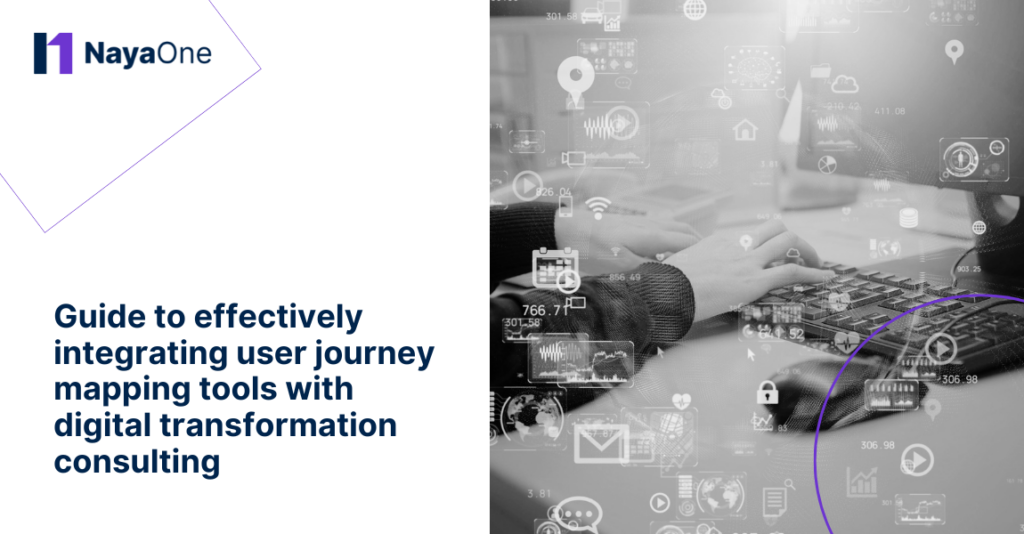Ever wondered why some businesses just seem to “get” their customers? A big part of that magic comes from understanding the customer’s journey. User journey mapping is like creating a storyboard of your customer’s experience with your brand, from the first interaction to the ongoing relationship. When you weave this mapping into your digital transformation plans, you’re not just throwing tech at problems—you’re crafting experiences that truly resonate.
By leveraging user journey mapping, businesses gain valuable insights into their customers’ needs, preferences, and pain points. This understanding allows companies to design personalised experiences that guide customers seamlessly through every interaction, building stronger connections and fostering long-term loyalty. With clear visibility into how customers engage with the brand, businesses can fine-tune their strategies, ensuring they meet customer expectations at every step. Integrating user journey mapping into digital transformation efforts ensures that technology enhances, rather than disrupts, the customer experience, ultimately driving better outcomes for both the business and its customers.
According to a study by Forrester, companies that use journey mapping see a 20% increase in customer satisfaction and a 15% increase in customer retention.
Understanding user journey mapping tools
So, what’s user journey mapping all about? It’s a visual representation of every interaction a customer has with your brand. Think of it as walking a mile in your customer’s shoes, seeing where they move smoothly and where they get stuck. This insight is gold for enhancing customer experience.
In fact, businesses that use journey mapping tools like these are 2.5 times more likely to improve their customer experience compared to those that don’t (Gartner, 2021).
The role of digital transformation consulting
Integrating new tech isn’t just about plugging in software and hoping for the best. Digital transformation consulting is like having a tech-savvy guide who knows the terrain. Consultants help align shiny new technologies with what your customers actually need and want, ensuring that each tech adoption is relevant to both business objectives and customer expectations. They bring a blend of technical expertise and strategic insight to ensure technology isn’t just modern but effectively enhances the customer experience.
However, it’s easy for businesses to get caught up in adopting new tools without considering how they fit into the broader customer journey. Without a structured user journey, organisations often make misaligned tech investments or roll out tools that don’t resonate with their audience. This can lead to poor customer experiences, inefficiencies, or wasted resources. For instance, a business might invest in a CRM system that lacks the features their customers actually value, leaving both staff and customers frustrated.
That’s where consultants come in. They help businesses step back, map out the customer journey, and identify pain points along the way. By understanding how customers interact with the business at each touchpoint, consultants ensure technology solutions directly align with customer needs. This not only smooths out the customer experience but also maximises the return on investment in new tools, leading to greater customer satisfaction and loyalty.
Digital transformation consultants also bring a data-driven approach to the process. By analysing customer data, feedback, and analytics, they can make sure your tech investments continue to meet customer expectations in real-time. With this ongoing support, businesses can remain agile and responsive, continuously improving the customer journey and staying ahead in today’s competitive market.
Best practices for integrating user journey mapping tools
Here’s how to integrate these tools effectively into your transformation efforts:
- Spot the pain points – Dive into customer feedback, reviews, and support tickets to uncover where users are getting frustrated.
- Map to transformation goals – Once you’ve identified the rough spots, align them with your digital transformation objectives. This ensures you’re not just fixing issues but propelling your business forward.
- Pick the right tools – Not all mapping tools are created equal. Choose one that meshes well with your business size, industry, and specific needs.
- Team up with consultants – Work with digital transformation consultants to seamlessly integrate these tools into your systems. Their expertise can help avoid common pitfalls.
Businesses that align their transformation efforts with journey mapping see a 25% faster return on investment (ROI) compared to those that don’t, according to McKinsey & Company.
Key benefits of integration
Merging user journey mapping tools with digital transformation efforts isn’t just a fancy move—it’s a strategic one. Here’s what you gain:
- Enhanced customer experience and engagement – By understanding the customer journey, you can tailor experiences that boost satisfaction and loyalty.
- Data-driven decision-making – These tools provide insights backed by data, taking the guesswork out of strategy and helping you make informed choices.
- Streamlined digital initiatives – A clear map of the customer journey makes digital transformation projects more focused and effective, avoiding wasted resources.
How NayaOne simplifies the integration process
Our platform is designed to make this whole integration process smoother and more effective. We offer the tools and expertise to seamlessly blend user journey mapping into your digital transformation strategy. With NayaOne, businesses can navigate the complexities of digital transformation with greater ease, ensuring that technology implementations are both effective and customer-centric.
By leveraging NayaOne’s platform, companies can integrate user journey mapping tools without the common hurdles, making sure every tech upgrade directly benefits their customers. This isn’t just about adopting new software—it’s about digital transformation consulting for the businesses that interact with their audiences.





